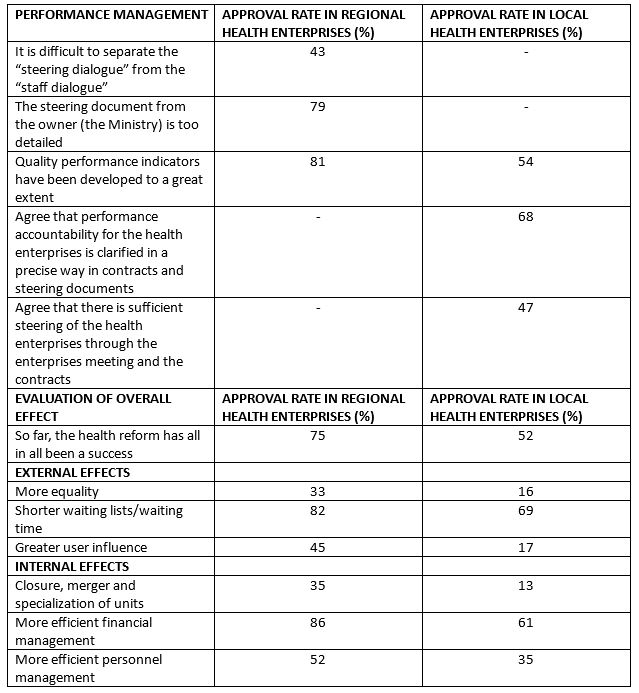Lessons From Norway: How to Adopt a PMS in State-Owned Enterprises

Image source: Pawel Gaul from Getty Images Signature
The implementation of a performance management system (PMS) has always been a challenging endeavor for the public sector. In a study published by the International Journal of Project Management and Productivity Assessment (IJPMPA), Neeta Baporikar considers that most challenges and setbacks are due to various factors which can be summarized in the following manner: reluctance to change management, lack of strategy alignment, poor leadership and organizational culture, lack of training and advocating for a learning culture, lack of flexibility and simplicity in internal processes, and the absence of rewards for good performance.
In this regard, how did the PMS become part of the public sector and why is it so hard to implement in state-owned enterprises (SOEs)?
Norway’s PMS
Foundations
In Norway, the process of implementing a PMS in the public sector started with the ‘80s public reforms, which were oriented towards budgeting, decentralization, and performance management. It began with the implementation of the balanced scorecard (BSC) at the local and central administration apparatus, followed by the Management by Objectives and Results (MBOR) PMS and the introduction of the annual activity plan that made MBOR mandatory for each public unit. The objective was to strengthen political control by making goals less ambiguous, focusing on results, introducing a monitoring system, and making greater usage of incentives.
Read more: This is how Norway is inspiring trust in government
In the case of public hospitals (which became state-owned trusts after 2002), the challenge of balancing political control and enterprise autonomy has raised other concerns, such as: How do they develop specific and easily measurable performance indicators? How much discretion and qualitative judgment will be involved? Will the MBOR be a formal PMS or will it be a combination of a trust-based system of dialogue and a formal contract?
Reforms
In the beginning of the century, Norwegian authorities focused on structural changes and policies that empower patients. Afterwards, the attention shifted towards improving coordination between healthcare providers, addressing safety issues, and improving service quality. A the core of all of those changes was the MBOR PMS, whose implementation was facilitated by a reform package consisting of:
- Budget reform, which reverted the budget system to productivity-oriented and granted regional financial autonomy, based on evaluation and systematic reporting of results
- Activity plan, which aim for less ambiguous goals, focusing on results and setting a monitoring system;
- Salary reform, which introduced annual assessment for executives and salaries based on individual contracts and pay-for-performance elements;
- Hospital ownership reform/hospital enterprises reform, wherein hospitals were organized as independent health enterprises with control over capital and personnel.
According to Pettersen and Nyland, those reforms paved the way for the establishment of performance standards and the introduction of performance audit schemes, where performance measurement became a key component. The managers became responsible for measuring and comparing results using different economic and medical indicators, including both indirect and direct quality measures. Moreover, the monitoring of economic performance in hospitals was done based on a national benchmarking database.
Effects
Every year, Norway’s Ministry of Health sets out performance indicators at all levels, such as # Number of in-patients treated, # Number of outpatient consultations, and cost indices. The relationship between the minister and the agencies is subject to a quasi-contractual agreement or a steering model, which reflects the ministerial accountability—a feature that distinguishes Norway from the rest of the Nordic countries when it comes to setting metrics and evaluating performance in the public sector.
A perception-based survey deployed both in regional and local hospitals assessed the impact of those measures, revealing the following findings:

Figure 1. Experience of Effects of the Hospital Reform Survey | Source: adapted from The Norwegian Hospital Reform, International Public Management Journal
Read more: Leveraging effective performance management systems for real estate success
The bottom line
In spite of being a consolidated democracy, the adoption of a PMS in the Norwegian public sector was neither easy nor smooth, being characterized by reluctance at the beginning, changes during implementation, and uncertainties regarding its structure and coordination. Nonetheless, the endeavor seems to have yielded several benefits, such as increased efficiency. In the case of Norway, it is clear that adopting a PMS in the public sector certainly paid off.
Interested in more articles about strategy and performance around the world? Click here.

